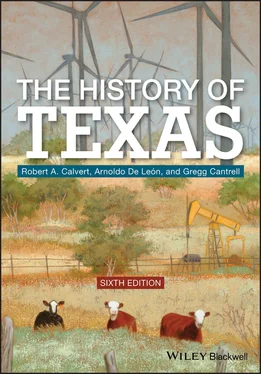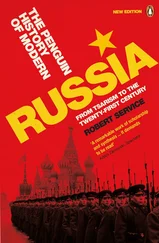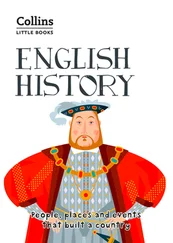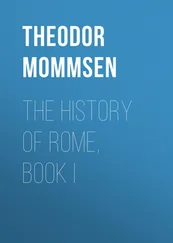Strikingly different from the aforementioned Native American tribes were the Apaches, Comanches, Wichitas, and Tonkawas. None of these Indian peoples–all of whom would play important parts in Texas history during the eighteenth and nineteenth centuries–lived in Texas in pre‐Columbian times. Their origins may be traced to the northern Rocky Mountain region of the present‐day United States. The Apaches, for instance, were related linguistically to tribes in Canada and Alaska, while the Comanches had originally made their homes in the valleys of the upper Yellowstone and Platte rivers. No one knows when exactly these tribes commenced their pedestrian migration into the Great Plains (the geographical expanse immediately east of the Rocky Mountains) and the Southwest in the pursuit of buffalo. Historians do know that these Plains Indians found new power in the horse (acquired in the seventeenth century from raids upon fledgling Spanish settlements or by capturing wild herds), for they learned to ride horseback with great skill while hunting buffalo, conducting warfare, or relocating to newer locales.
A number of forces ultimately led the Plains Indians toward Texas. Mounted warfare produced winners and losers; the Comanches–the most successful because of their high mobility and unmatched riding skills–became such a terror on the Plains that the Apaches (namely the groups known as the Lipans and the Mescaleros) by the late seventeenth century began heading south to take refuge in Texas. So did the Wichitas from Oklahoma and Central Kansas, though they sought haven from their enemies attacking them from the upper Mississippi Valley. The Comanches, meanwhile, continued expanding their nomadic hunting grounds southward, pursuing buffalo on horseback, fighting the hated Apaches, and bolstering their pony herds by rounding up wild horses. For their part, the Apaches in their retreat southward threw so many lesser Texas tribal units into disarray that in Central Texas there formed a disparate group of refugees that collectively came to be known as the Tonkawas. As with the Apaches, the Tonkawas were no match for the Comanches, who by the early 1700s had arrived in Texas to become the dominant force in the northern, central, and western regions of the province.
In Texas, the Apaches, Comanches, Wichitas, and Tonkawas depended on the buffalo for almost all their essential items, including food, shelter, clothing, weapons, and tools. Using bows and arrows, the Plains Indians effectively hunted not only buffalo but also deer, antelope, turkeys, and other wild game. Small garden plots, however, provided a secondary source of food, and some of these bands raised maize and other vegetables including squash and beans. They also gathered berries and other domestic fauna such as agave, from which they made intoxicating beverages. Additionally, wild plants gave them herbs, fruits, and other products that they consumed themselves and used in barter.
The Plains Indians lacked any pan‐tribal political structure, so families formed the basic social foundation. Groups of families under a chief composed working units that served to defend the people or to retaliate against other groups for wrongs inflicted. In some cases, their livelihood depended as much upon preying on other tribes who had items they needed for sustenance as it did upon reaping nature’s bounty. Fiercely independent, the Plainspeople held religious views that allowed for individual relationships with deities; their faith in a single, all‐powerful being was only ephemeral. Shamans, or religious figures, exerted no great authority among the wanderers of the Plains, as they mainly served to heal the infirm.
The first white people with whom the indigenous inhabitants of Texas competed for political and economic advantage came from the Iberian Peninsula–a part of Europe in which history had departed in substantive ways from that of the rest of the continent. The early history of Spain, however, does not belie this difference. Like the rest of Europe, the Iberian Peninsula had come under the rule of the Greeks and later was subsumed by the Roman Empire. From the Romans, Spaniards derived their language, law, customs, religious faith, and the name of their country– Hispania . When Spain, along with the rest of Europe, fell to invading tribes in the fifth century, the Visigoths swept over the peninsula and superimposed their way of life over that which the Romans had instilled. Like other Europeans, the Iberians then began forging new lifeways that combined the Roman influence, the newer Germanic contributions, and evolving Christian beliefs, for in Spain, as elsewhere, the Visigoths ended up assimilating the religion, language, and form of government of the people they had conquered.
The Muslim era and the reconquista
What chiefly separated the history of the Iberian peoples from that of the rest of western Europe was the conquest of Spain by Muslims from northern Africa (Arabic or Berber peoples known loosely as the Moors) who sought to spread their Islamic faith. Partly because of the Muslim domination of the peninsula, which began in AD 711, feudalism did not attain maturity in Christian Spain. The constant state of warfare to oust the Muslim intruders equalized social distinctions, thereby blurring class differences then prevalent in northern Europe. In each Christian state, furthermore, the war bolstered the role of the king as the military leader responsible for the reconquista (reconquest), the term generally used to refer to the centuries of struggle to regain Spain from the Muslims. Following a tradition used by the Moorish invaders, Christian fighters surrendered one‐fifth of the spoils of their conquests to the monarch–a custom that granted further power and wealth to the Crown. Because the Muslims were among the world’s best‐connected merchants, their influence helped Spain enjoy brisk economic activity with the Islamic world. Numerous Spanish cities became commercial hubs as their merchants developed prosperous ties with their counterparts in Africa, the several Mediterranean countries, and the Muslim world of the Middle East. Even Iberians who earned their living from the soil participated in the economic good times, as they sold their produce in domestic as well as export markets. Efforts to resist the aggressors and reconquer the motherland molded Spanish culture during the Middle Ages. Of the several Christian states that individually or jointly sought to push back the Moors, none excelled Castile, the heartland of Spain stretching from the peninsula’s northern lands south to the central plateau. Castile’s campaign to expel the Muslim interlopers turned into a way of life that accentuated the warrior hallmarks of valor, tenacity, intrepidness, and survival at any cost–traits embraced by the conquistadores (conquerors) whatever their social station.
Through time, moreover, the Castilian reconquista assumed the aura of a religious crusade. The discovery in AD 900 of what Spaniards believed to be the burial site and body of the apostle Santiago (St. James the Great) in northern Spain, inspired Spanish religious fervor, for St. James supposedly had brought Christianity to Iberia. The reconquista prompted the Crown to bestow the role of ally upon the Catholic Church, and, in turn, the Church’s preaching in support of this cause rendered numerous social and political privileges to the clergy. By the thirteenth century, Catholic religious orders such as the Franciscans and Dominicans engaged in proselytizing activity among the Spanish Muslims.
The reconquista also encouraged the raising of sheep in agrarian Castile, for the Castilians found that sheep produced higher and quicker profits than did their crops. And unlike crops, herds could be moved quickly out of harm’s way during the constant warfare. When stockmen imported merino sheep from northern Africa in 1280, the Iberians bred them with their native stock. The new strain produced such a superior grade of wool that merchants in the international market eagerly sought the product, which brought handsome profits.
Читать дальше










